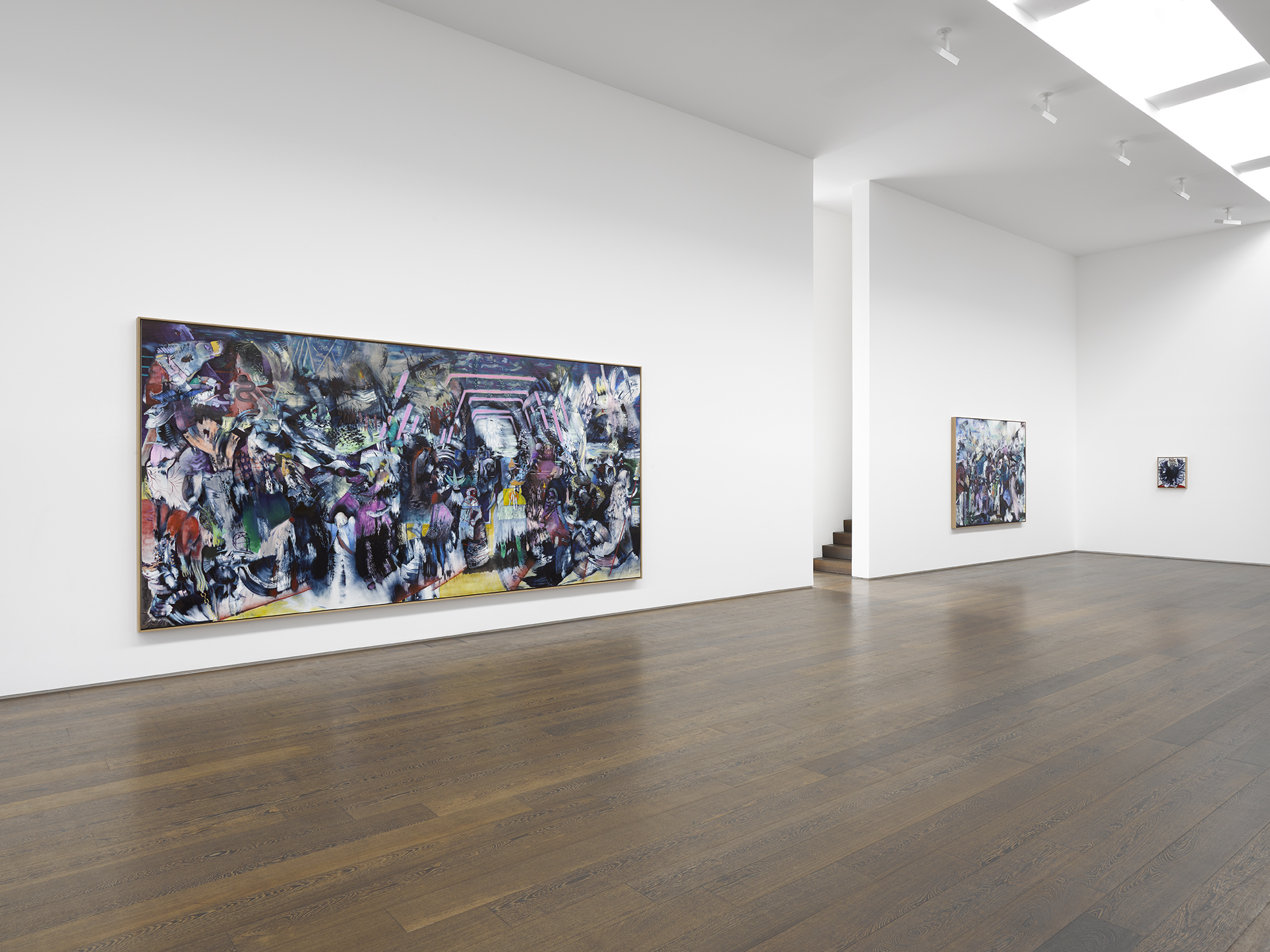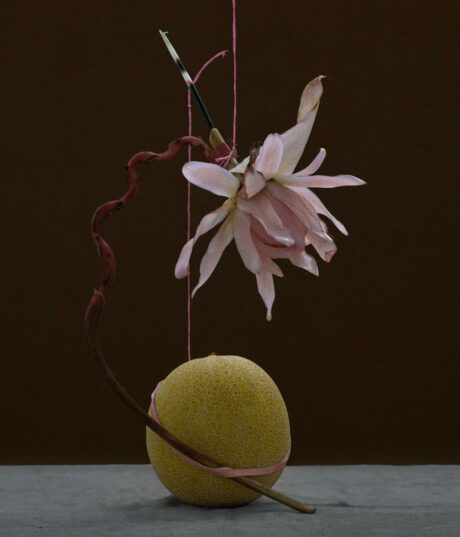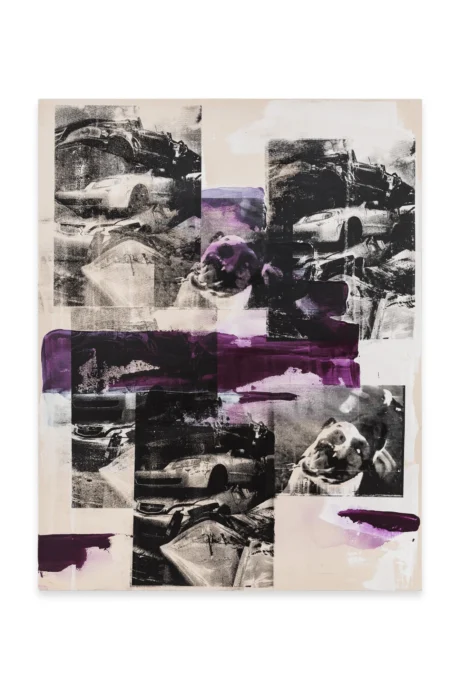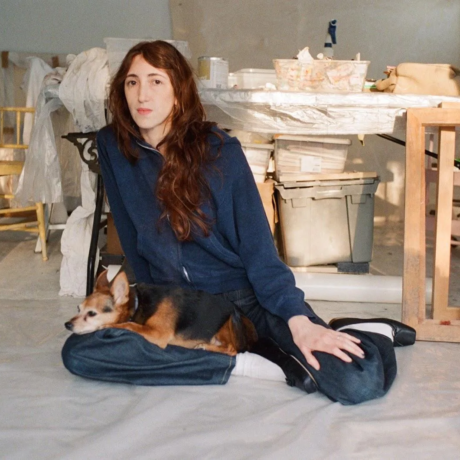
Contemplating Ali Banisadr’s work is like hurtling at a terrifying speed through time, free-falling back to ancient Mesopotamia, darting forward to the edge of infinity and ricocheting between the fall of empires and the birth of new civilisations. His current exhibition, ‘The Changing Past’ at Victoria Miro, features monumental, jaw-droppingly complex and truly entrancing paintings that utilise forgotten histories as tools to imagine new futures.
Although distinctly contemporary, each individual piece Banisadr creates simultaneously contains forms drawn from ancient artefacts such as the 4000-year-old ‘Queen of the Night’ relief housed in the British Museum, bodies that frolic like the uncanny characters of Hieronymus Bosch’s triptych The Garden of Earthly Delights, votive tableaus akin to Early Renaissance painters such as Piero della Francesca and menacing monsters to rival Francis Bacon’s own. Reborn upon Banisadr’s canvases, these vestiges of the art historical canon are juxtaposed with influences from technology like AI or algorithms and the potential robotic hybrids of the future, framed within an otherworldly, almost space-age painterly architecture of skyscrapers towering among ruins.
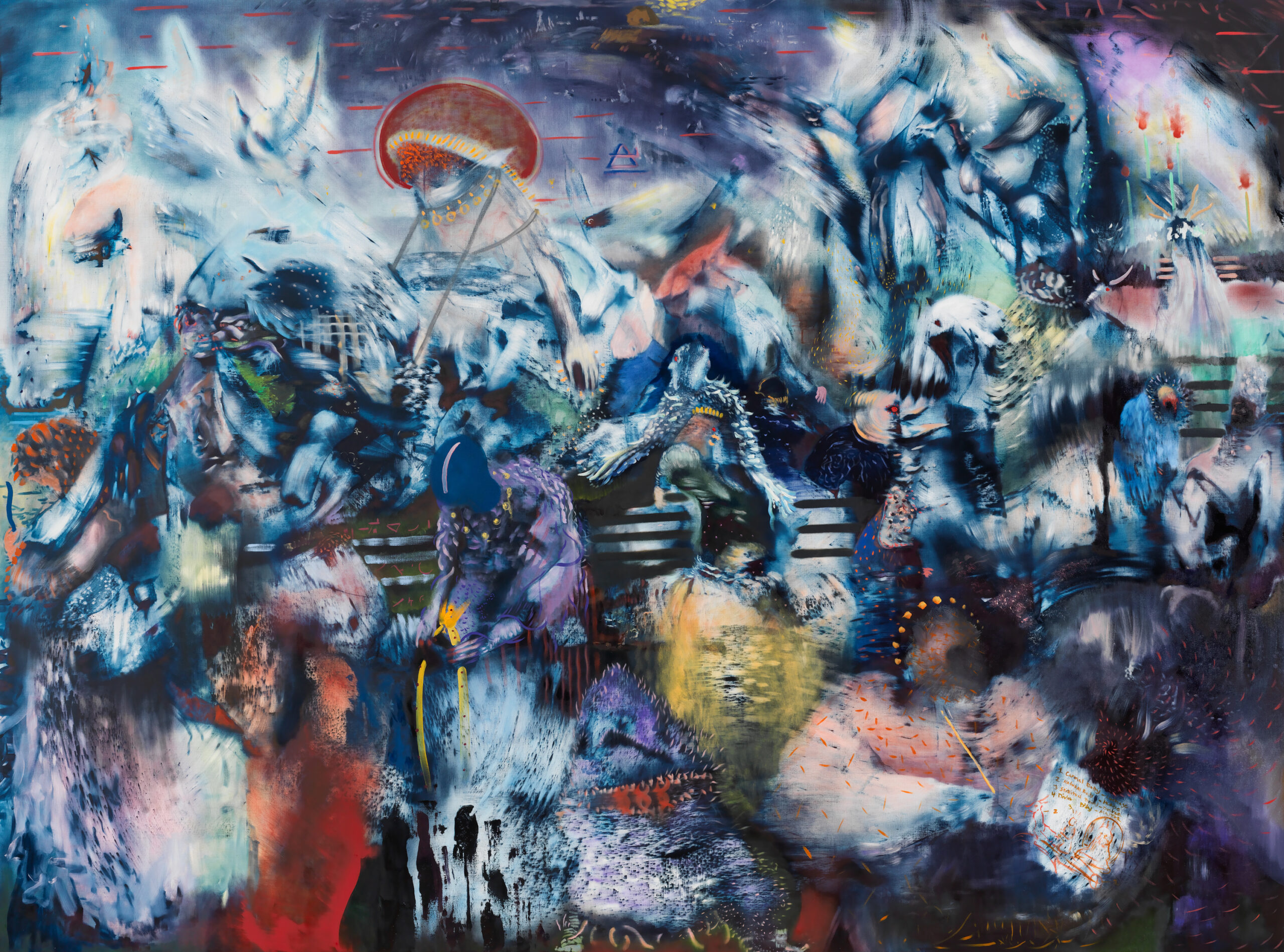
In creating these worlds that span millennia, the artist is attempting to uncover an ever-present and essential facet of humanity that has impacted cultural production through the ages – a desire that can be traced back to his childhood. Having been born in 1976 in Tehran, the artist was around three at the time of the Iranian Revolution and four when the Iran-Iraq war began. Having played amongst the debris and felt the vibrations of falling bombs when he was young, as an adult, he began attempting to piece the fragments that remain after societies collapse back together upon the canvas. He builds new worlds from amongst the ruins while looking beyond the monotony of the every day to trace barely decipherable patterns through time and draw connections between eternal histories of civilisations’ repeated decline, decay and redevelopment. He transposes this almost omnipotent and detached way of conceptualising the present onto the canvas, hiding clues and symbols that await the viewer willing to seek them out from among the noise.
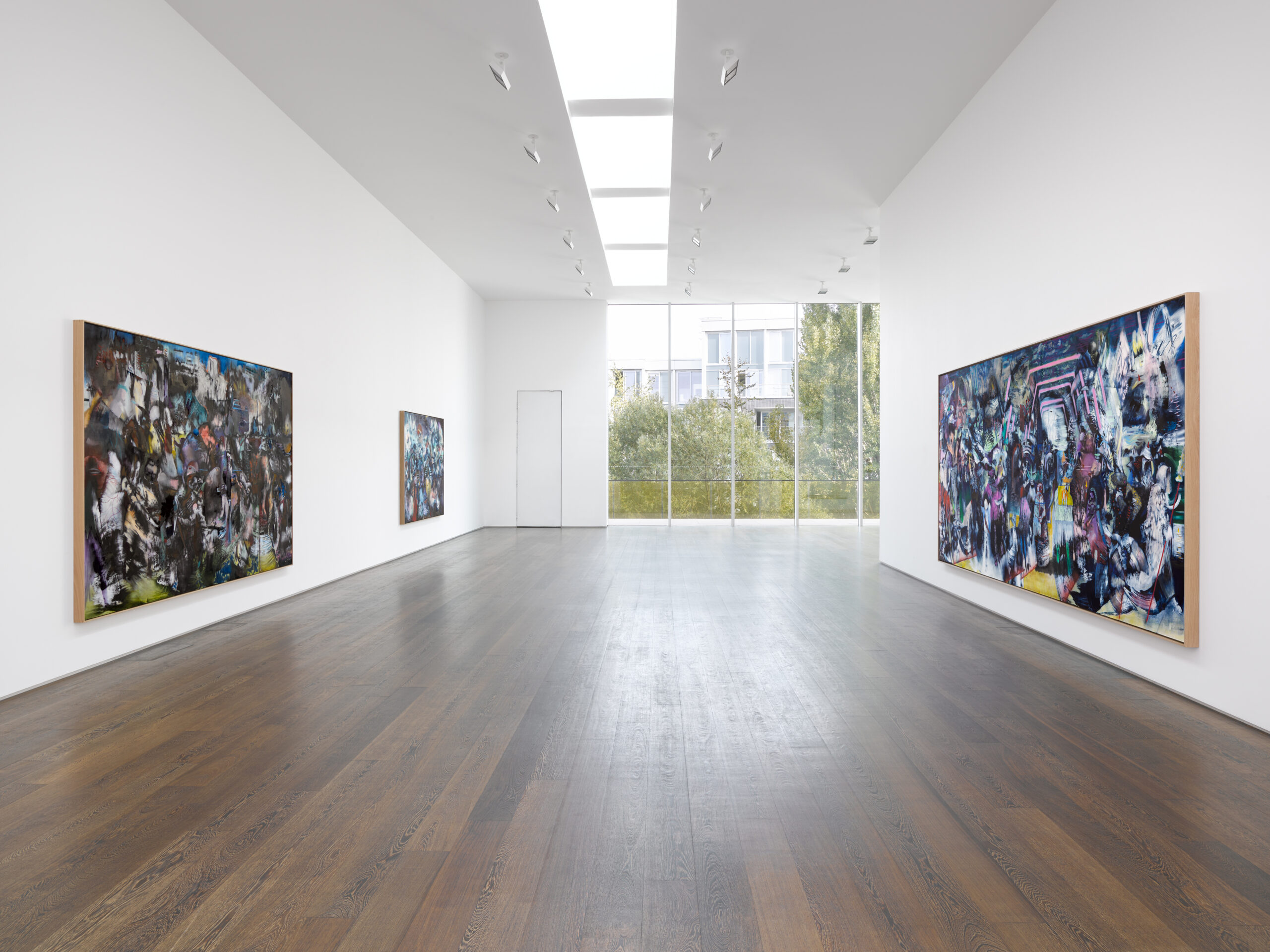
Banisadr’s practice is thus a presentation of a changing past. From his studio in Brooklyn, he ignites transhistorical conversations, allowing the past to be informed and transformed by the present. His work continues to whisper of his childhood in Tehran and his teenage years as an immigrant in a suburb of San Diego, each piece a vortex-like cypher filled with fragments drawn from the many different cultures he has experienced and studied. The numerous influences that build into any one work are exemplified by his creation of reading tables, a collection of books, images and plates that grow taller in response to the visual clues he is given by each work. As they progress, his paintings demand to be formed of the cultural phenomena of the past, imploring the artist to return to a particular phrase in a poem or reproduction of an artwork in a book.
These images from the past are deployed as tools to consider the present and the future, with many of the works in Banisadr’s current exhibition being responses to recent socio-political events that have come to shape our time: Queen of the Night (2022), for example, can be interpreted as a meditation on the women’s revolution in Iran. Containing ghost-like figures that hover menacingly above a strange procession, the painting is littered with hints as to its meaning; two pale hands emerge from the mist holding a note scrawled with the word ‘lies’, a small feminine figure with an owl’s head holds a glowing rod and ring symbolic of leadership in ancient Mesopotamia, among the clouds in the upper-right area a woman waves a flag and a prominent female figure at the lower left bears the alchemical symbols for ‘woman’ and ‘life’ rendered in blood red upon her dress.
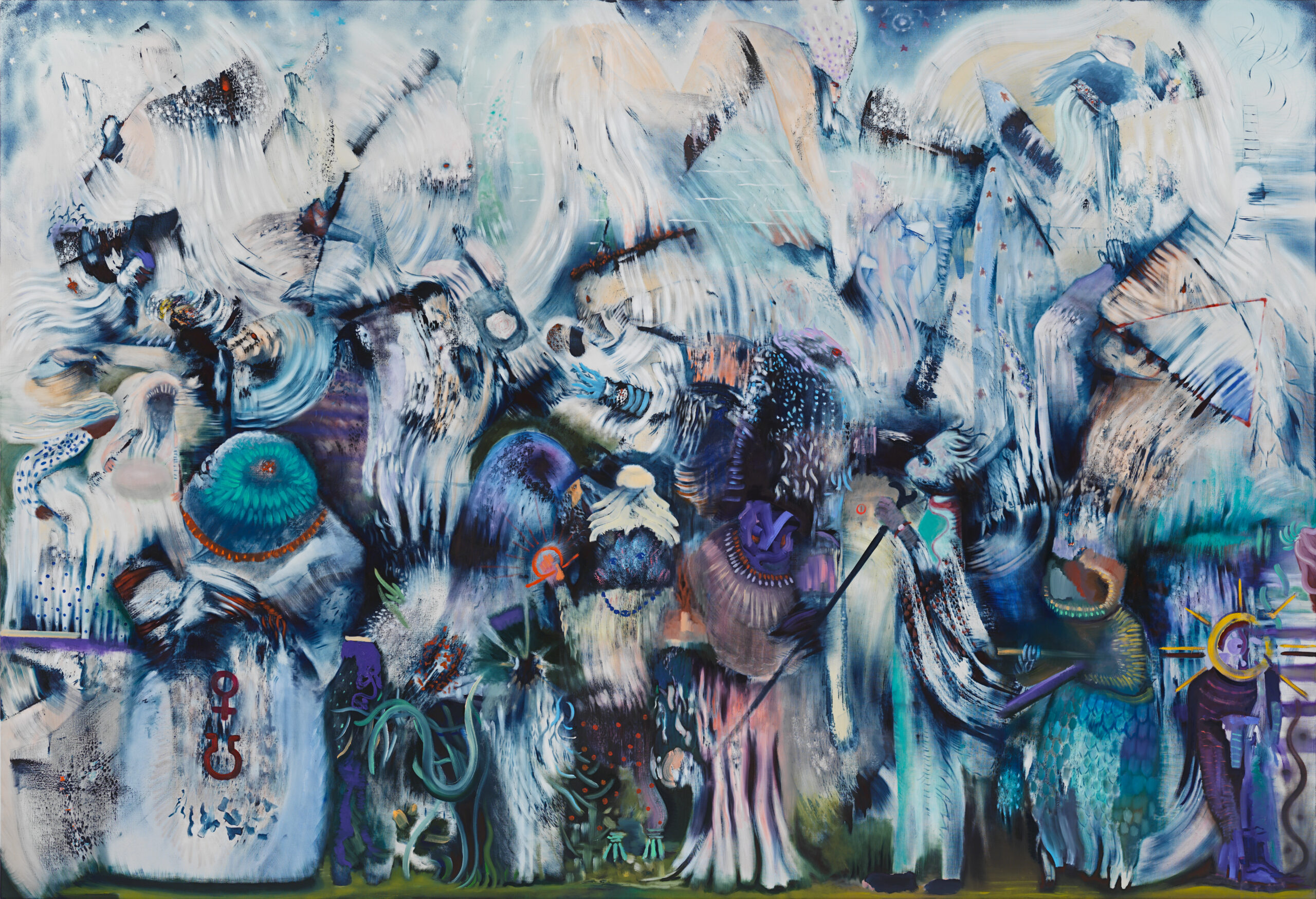
The entrancing, expansive, nearly two-and-a-half metres wide work from which the exhibition’s title is drawn, The Changing Past (2021), meanwhile, sees the artist turning his attention to the recent dismantling of monuments in the name of the Black Lives Matter Movement. In this piece, a towering yet ephemeral figure with a glowing red halo is seen falling down towards the chaotic assemblage of animals, figures and creatures below. Around its neck is a clearly rendered rope that blurs into the furious mob as if being pulled by all at once. Resisting association with any one fixed incident of iconoclasm, the piece becomes symbolic of the continuous cycle of ideological transformations that have inspired the demolishing of icons and the restructuring of public space throughout time. Rather than a direct depiction of Edward Colston being dragged into the Bristol dock, the central figure within the work stands in as a universal monument of a type found in every culture and in every age being torn down to be replaced by yet another. Indeed, in the lower left of the painting, a smaller figure can be seen paying tribute to another form, perhaps signalling the emergence of the next belief system with its own statues and votive symbols. Like Queen of the Night (2022), The Changing Past (2021) is thus a complex and immensely loaded realm that the viewer must enter wide-eyed and in search of meaning. Quoted in the exhibition’s accompanying text, Ali Banisadr identifies the ultimate aim of his practice as a way to “see what lies beyond all the confusion” and to “heal” from “man-made and natural disasters, violence and conflict”. His method, meanwhile, is to unpack the chaos of the present and imagine new futures by looking through the lens of the past. Imbued with fragments of every culture, civilisation and time period, the artist’s work can thus be understood as a deeply encoded and cryptic pathway to a better world. All that remains is for us to decipher it.
Words by Bella Bonner-Evans. Images courtesy the artist and Victoria Miro.
